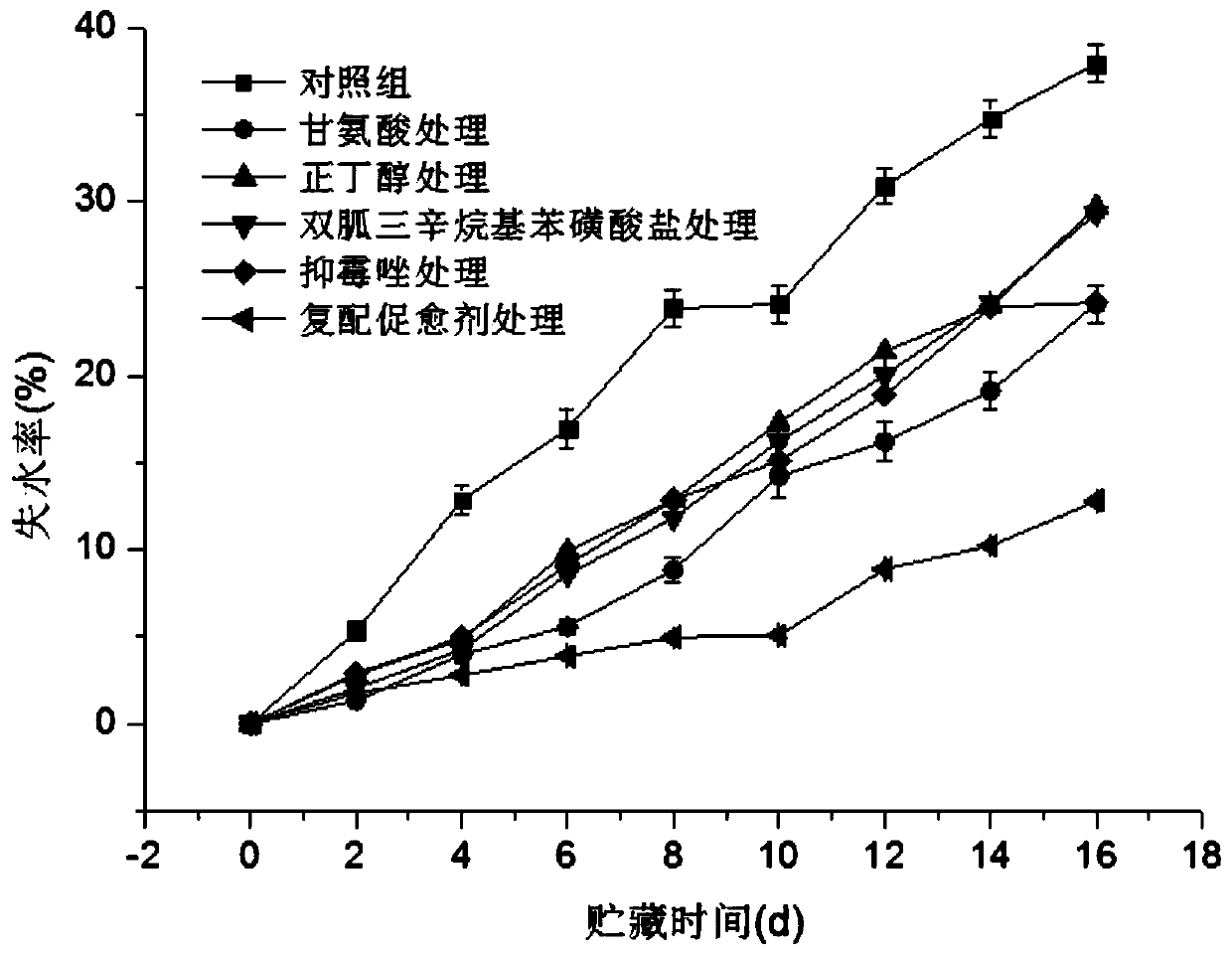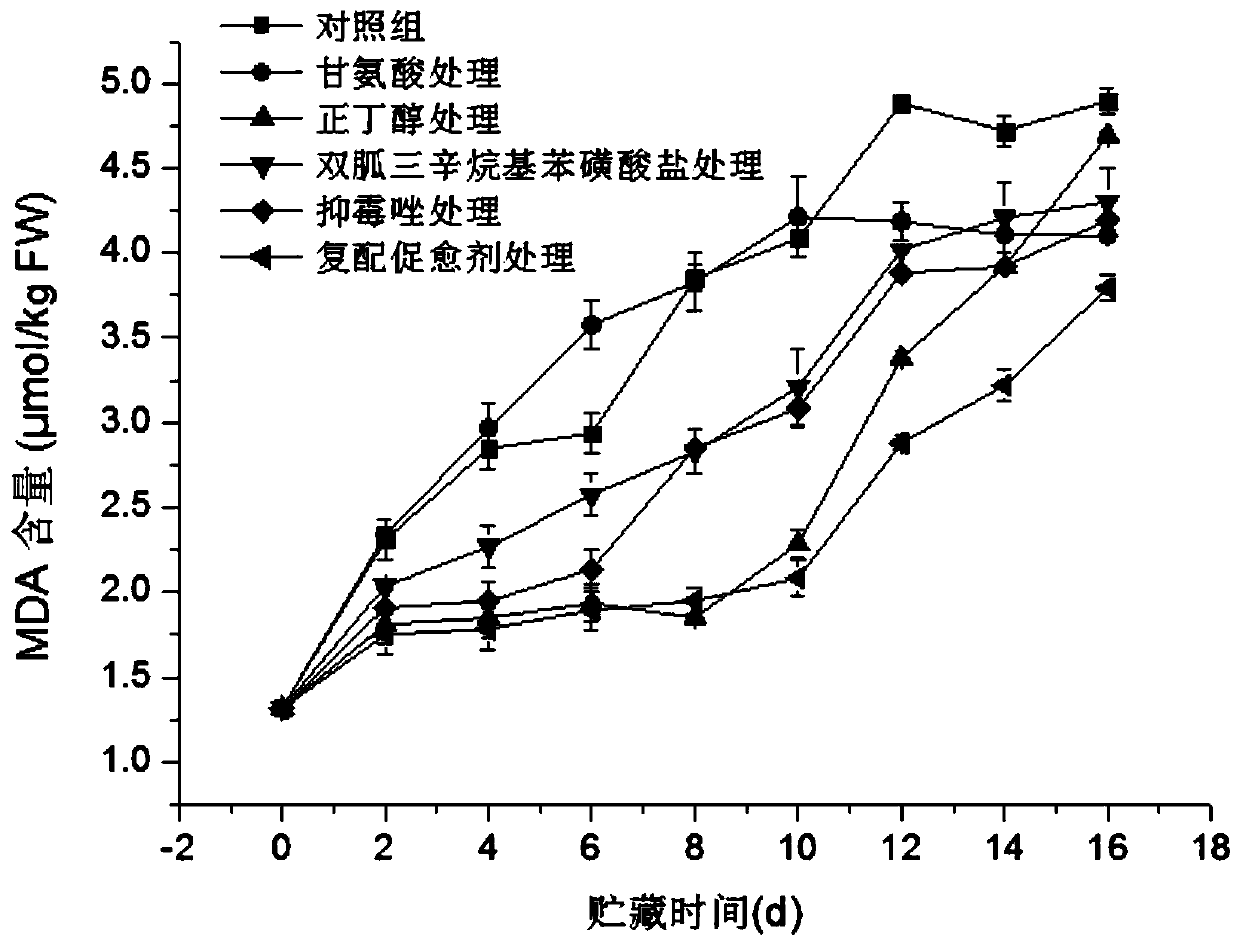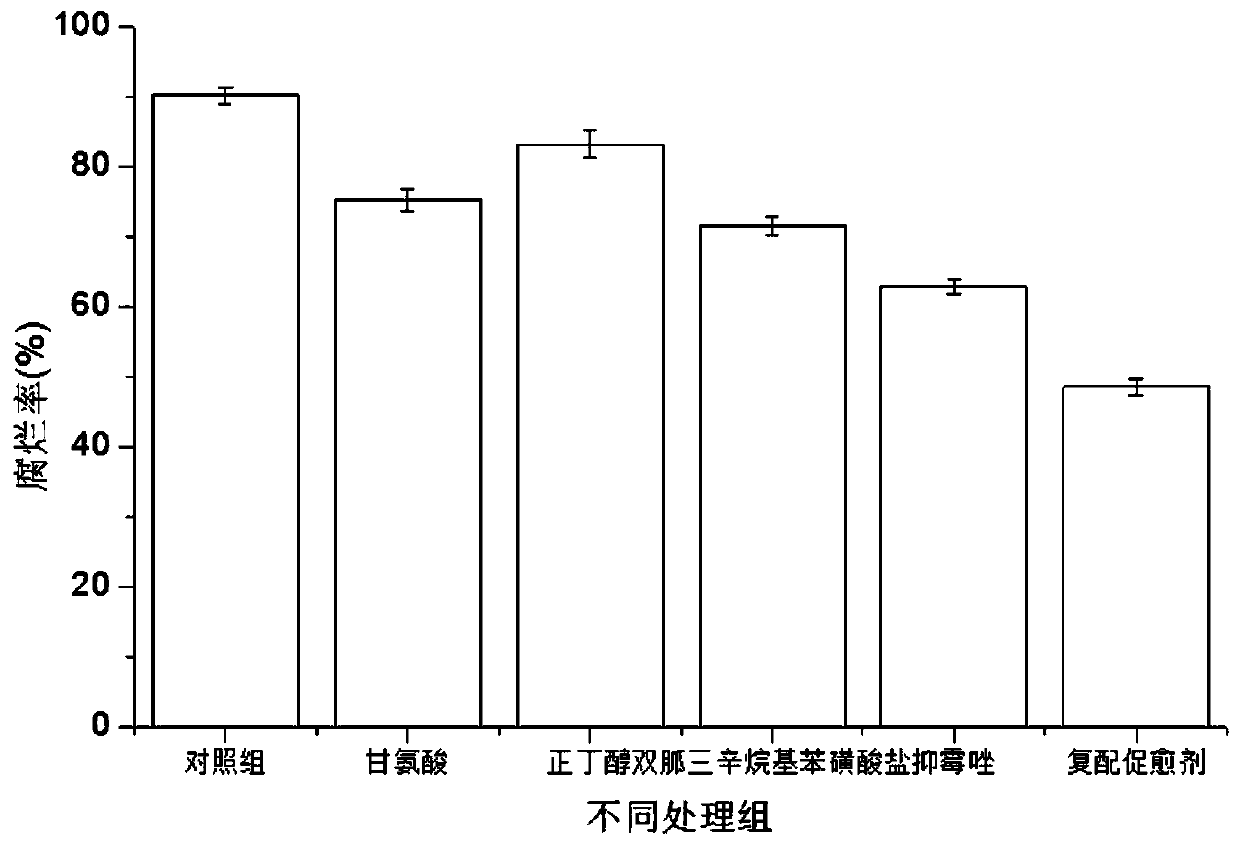Healing agent, method of use and application for promoting the healing of mechanically damaged wounds of fruits and vegetables
A technology of mechanical damage and wound healing, applied in the fields of application, fruit and vegetable preservation, botanical equipment and methods, etc., can solve the problems of increased storage cost, rot disease, and increased accumulation of polyphenols in sweet potatoes, and achieve enhanced PAL activity and Antioxidant enzyme activity, reducing the infection of pathogenic bacteria, and reducing the effect of polyphenol content
- Summary
- Abstract
- Description
- Claims
- Application Information
AI Technical Summary
Problems solved by technology
Method used
Image
Examples
Embodiment 1
[0024] A healing agent for promoting mechanical wound healing of fruits and vegetables. The active ingredients are composed of glycine, n-butanol, biguanide trioctylbenzenesulfonate and imazalil. The ratio of each component is glycine 50mg / L, n-butanol Alcohol 0.05mg / L, biguanide trioctylbenzenesulfonate 50mg / L and imazalil 20mg / L.
[0025] The method of using the above healing agent is to mix and stir glycine, n-butanol, biguanide trioctylbenzene sulfonate and imazalil according to the proportion, and soak the fruits and vegetables with wounds on the skin of fruits and vegetables due to mechanical damage for 2 minutes. , the healing agent is submerged in the wound, taken out to dry, placed in a humidity of 80%, and stored at a temperature of 12°C for 3 days.
[0026] The application of the above-mentioned healing agent is to use the healing agent to promote the application of wound healing after mechanical damage occurs in the pericarp of pomelo.
Embodiment 2
[0028] A healing agent for promoting wound healing of mechanically damaged fruits and vegetables. The active ingredients are composed of glycine, n-butanol, biguanide trioctylbenzenesulfonate and imazalil. Alcohol 0.2mg / L, biguanide trioctylbenzenesulfonate 200mg / L and imazalil 100mg / L.
[0029] The method of using the above healing agent is to mix and stir glycine, n-butanol, biguanide trioctylbenzene sulfonate and imazalil according to the proportion, and soak the fruits and vegetables with wounds on the skin of fruits and vegetables due to mechanical damage for 8 minutes. , the healing agent submerges the wound, takes it out to dry, and places it at a humidity of 90% and a temperature of 18°C for storage for 6 days.
[0030] The application of the above-mentioned healing agent uses the healing agent to promote the application of wound healing after mechanical damage occurs in the pericarp of the navel orange.
Embodiment 3
[0032] A healing agent for promoting mechanical wound healing of fruits and vegetables. The active ingredients are composed of glycine, n-butanol, biguanide trioctylbenzenesulfonate and imazalil. The ratio of each component is glycine 100mg / L, n-butanol Alcohol 0.1mg / L, biguanide trioctylbenzenesulfonate 100mg / L and imazalil 50mg / L.
[0033] The method of using the above-mentioned healing agent is to mix and stir glycine, n-butanol, biguanide trioctylbenzenesulfonate and imazalil according to the proportion, and soak the fruits and vegetables with wounds on the skin of fruits and vegetables due to mechanical damage for 5 minutes. , the healing agent is submerged in the wound, taken out to dry, and stored at a humidity of 85% and a temperature of 15°C for 4 days.
[0034] The application of the above-mentioned healing agent is to use the healing agent to promote the application of wound healing after mechanical damage occurs in the peel of the banana.
PUM
 Login to View More
Login to View More Abstract
Description
Claims
Application Information
 Login to View More
Login to View More - R&D
- Intellectual Property
- Life Sciences
- Materials
- Tech Scout
- Unparalleled Data Quality
- Higher Quality Content
- 60% Fewer Hallucinations
Browse by: Latest US Patents, China's latest patents, Technical Efficacy Thesaurus, Application Domain, Technology Topic, Popular Technical Reports.
© 2025 PatSnap. All rights reserved.Legal|Privacy policy|Modern Slavery Act Transparency Statement|Sitemap|About US| Contact US: help@patsnap.com



